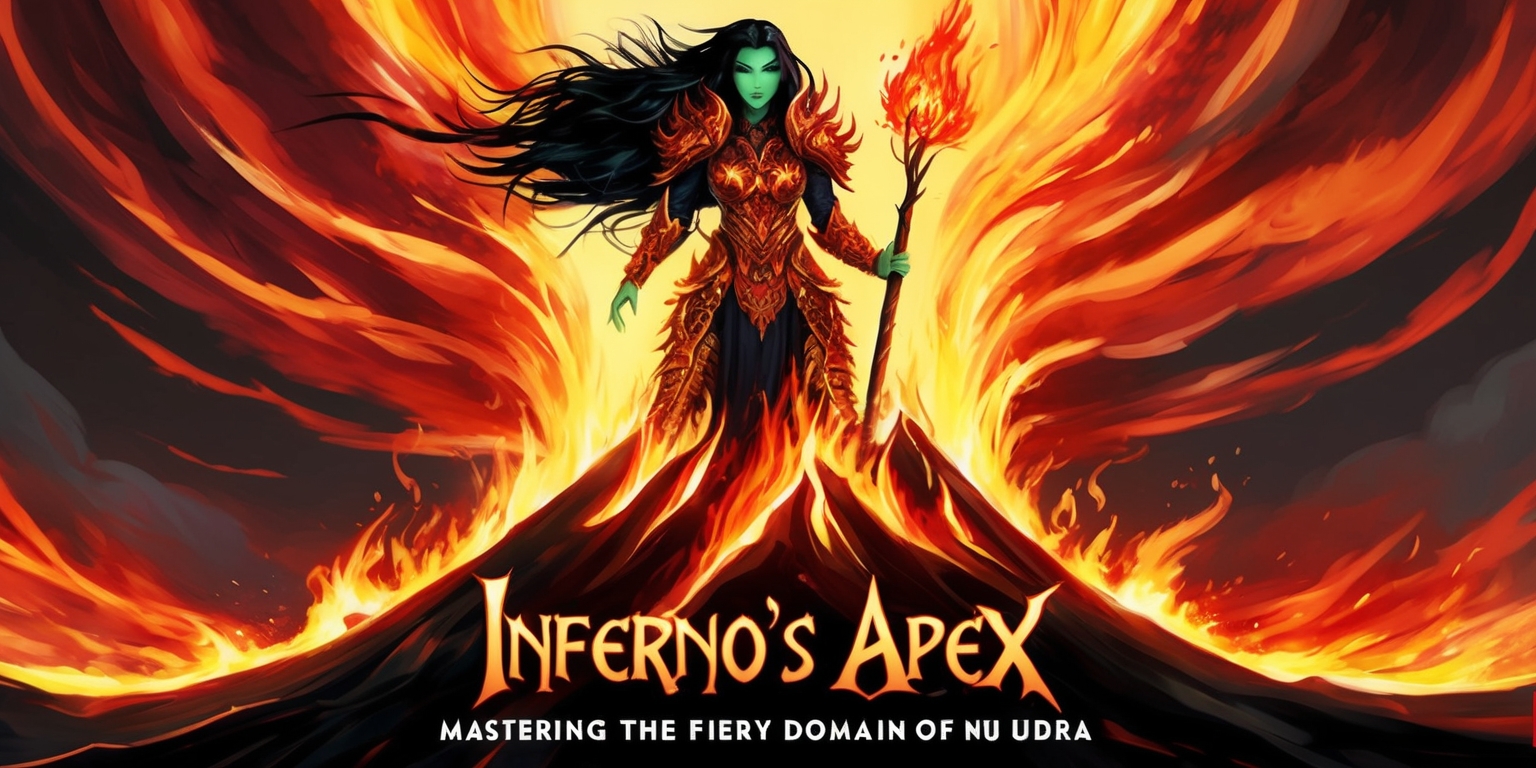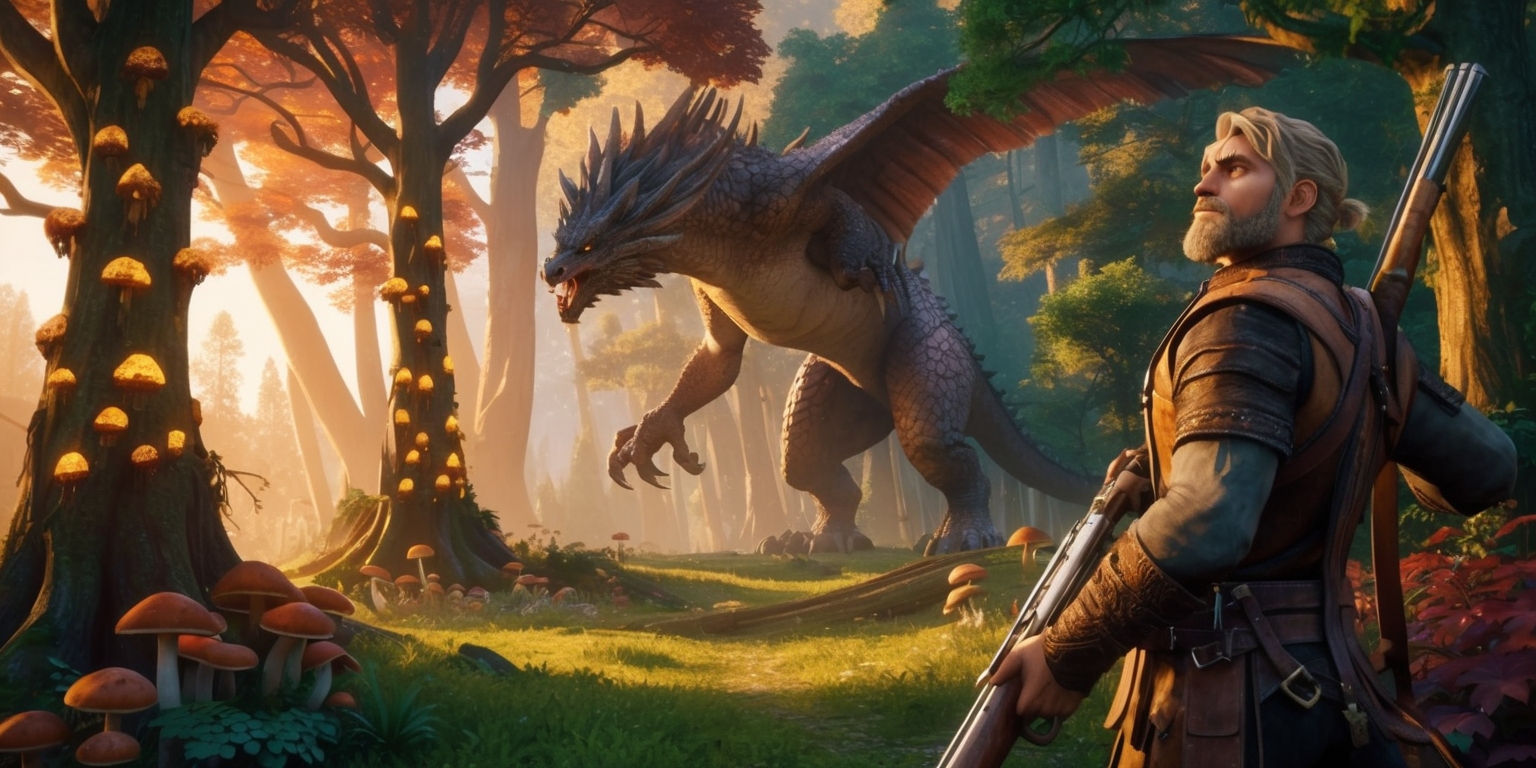Inferno’s Apex: Mastering the Fiery Domain of Nu Udra
- May 19, 2025
- 0

The world of Monster Hunter Wilds unfolds a realm where unexpected challenges and relentless adversaries redefine the very nature of survival. In this ever-changing environment, Hunters face not only imposing creatures but also harsh landscapes and extreme conditions that demand both tactical thinking and raw determination. One such formidable foe is the fiery Nu Udra, a creature that emerged as The Black Flame during a critical juncture in the storyline. This entity is renowned for its explosive power and versatility in combat, creating an atmosphere where every encounter is steeped in danger and strategy. Its presence demands a full-spectrum analysis—from its physical traits to the ambiant hazards of its environment.
Fiery Intricacies of a Fabled Creature
The enigma known as Nu Udra, introduced to players as The Black Flame, is wrapped in both awe and caution. Within Monster Hunter Wilds, this predator exhibits a unique blend of raw power and agility, marking it as a creature that defies simple categorization. Its manifestation is as much about its overwhelming presence as it is about its devastating area attack, which can unsettle Hunters who are unprepared. The fiery nature of Nu Udra is not simply for show; it plays a pivotal role in its combat strategy, evidenced by its tendency to ignite itself when enraged. This self-initiated flame can disrupt attack patterns and force Hunters to reconsider their positioning. Every encounter with this beast becomes a test of one’s understanding of both the creature’s temperament and the environment it calls home.
Environmental Challenges That Demand Cunning Tactics
The Oilwell Basin, a harsh and unforgiving region, serves as the relentless hunting ground for Nu Udra. Here, the ambient heat and volatile terrain Introduce additional dimensions of complexity into an already perilous situation engagement. The basin’s stifling conditions enhance the creature’s natural abilities, creating a scenario where every step must be carefully calculated. The environmental hazards intertwine with the creature’s own fiery abilities to create a symphony of danger for even the most seasoned Hunters. A grasp of the surrounding geography is essential, and attentive observation of heat patterns can reveal hidden vulnerabilities. In essence, the battleground transforms into a dynamic puzzle where both the monster’s explosive demeanor and the scorching climate blend to create a formidable challenge.
Precision Targeting of Vital Anatomical Points
Understanding Nu Udra’s vulnerabilities is crucial for devising an effective strategy. Its mouth, head, and six elongated limbs represent the weak points that, if targeted, has the power to radically alter the course of combat. The mouth, though a vulnerable area, is often shielded by the creature’s sinuous appendages, making precision necessary when using ranged weaponry. Equally, the head offers opportunities when it can be rendered unstable or structurally compromised. The limbs, resembling tentacles, can be successively disabled, diminishing the creature’s offensive capabilities gradually. Each severed appendage not only decreases the potential for lethal maneuvers, but it also leaves the creature temporarily exposed, permitting calculated follow-up maneuvers. This focus on precision targeting is emblematic of the tactical depth available to Hunters who study their prey meticulously.
Diverse Offensive Tactics and Defensive Maneuvers

Engaging Nu Udra on the battlefield requires a refined balance of offense and defense. The creature is notorious for its rapid, sweeping arm movements designed to outmaneuver its opponents. With an eye for the subtle movements that signal an upcoming attack, skilled Hunters can evade these swift strikes and exploit the brief moments of exposure. This engagement is not about brute strength; it is An evaluation of precise timing, swift reflexes, and spatial perception under pressure. The interplay of distance management and well-timed countermeasures, especially when armed with viable ranged options, exemplifies the sophistication required to overcome such a beast. Keeping one step ahead of these rapid maneuvers substantiates the notion that every second in combat counts and that fluidity in action supersedes mere persistence.
Harnessing Elemental Interactions to Your Advantage
The combat dynamics shift dramatically when Nu Udra enters its blazing phase. When the creature becomes ignited, its entire body is set afire, and its attacks carry an added weight of incendiary danger. However, this self-ignition often comes with an exploitable drawback: its vulnerability to water-based remedies. Using water moss strategically during these moments can suppress the flames and leave the creature for a brief period of diminished strength. The ability to modulate its fire through the application of such natural countermeasures transforms the encounter into a calculated duel where elemental interactions influence the flow of battle. It is this juxtaposition of fire and water, aggression and vulnerability, that highlights the depth of environmental and combat-based interactions intrinsic to Monster Hunter Wilds.
Observing and Interpreting Aggressive Patterns
Close observation of Nu Udra reveals a pattern of aggressive behavior that is as methodical as it is chaotic. One of the creature’s hallmark moves is its use of multiple arms to quickly slam the earth with tremendous force. This barrage of strikes requires Hunters to be ever alert and ready to harness the environment for cover or to perform agile evasive actions. Recognizing the signals—such as the raising of a limb or a shift in posture—provides a critical window to counteract these attacks. Being Remaining composed and anticipating the moment when the creature’s limbs extend too far creates an opening for precise targeting. This nuanced understanding of its movements transforms the engagement from a reactive skirmish into a carefully choreographed dance of strategy and precision.
Exploiting the Fire-Infused AOE Maneuver
Among the various formidable maneuvers of Nu Udra, its area-based fiery attack stands out as particularly hazardous. When the creature spins with ferocity, it unleashes a cascade of heated projectiles that rain down over a broad area, transforming the immediate vicinity into a zone of intense danger. This move can catch an unprepared Hunter in its devastating radius, creating a scenario where rapid withdrawal is paramount. The avoidance of this onslaught requires both anticipatory movement and a keen sense of spatial awareness. With the battlefield rapidly changing due to this fiery cascade, success hinges upon the immediate identification of safe zones and the agile repositioning necessary to stay clear of the molten barrage. The management of distance during these moments is as crucial as it is instinctive.
Adaptive Use of Focused Attack Modes
When the opportunity arises to exploit the creature’s weak points, Hunters are advised to use focused modes of attack. These specialized stances in combat allow for a more accurate and relentless application of pressure on identified vulnerable areas. Rather than engaging in a broad-based assault, the careful removal of enemy limbs or precise targeting of its head and open wounds enhances the overall effectiveness of each strike. The adoption of such a focused strategy is vital when contending with an opponent capable of simultaneous multi-limb aggression. This tactical shift towards precision over raw strength ensures that each maneuver directly contributes to destabilizing the creature’s combat capability, while also mitigating the risk of overexposure to its counterattacks.
Acumen in Resource Management and Material Harvesting
Beyond the intricacies of combat, engagements with Nu Udra present Hunters with the opportunity to procure materials that are essential for advancing in Monster Hunter Wilds. Successfully non-invasively capturing or disabling certain body parts of the creature can yield rare harvestable items that contribute to the creation of better gear and the refinement of tactics. These materials, particularly those available at lower difficulty levels, serve as tangible rewards for the calculated risks taken on the battlefield. The opportunity to gather these resources not only incentivizes repeated encounters but also underscores the importance of balancing aggression with careful resource management. This aspect of the game ensures that every confrontation is layered with both rapid tactical moves and far-reaching strategic planning benefits.
Tracking the Elusive Signature of a Predatory Beast
Locating Nu Udra in the tumultuous expanses of Oilwell Basin requires both vigilance and a deep understanding of the environmental cues prevalent within the region. The creature’s first notable appearance is intricately woven into the storyline, emerging prominently during the quest known as 'Long Forgotten Flame.' Following the trace left by scoutflies, which act as subtle guides across varied terrains, Hunters can anticipate the creature’s imminent arrival. The process of detection is both an exercise in patient observation and a test of one’s ability to integrate environmental signals with in-game alerts. This methodical tracking process transforms the hunt into a full-fledged expedition, blending the excitement of discovery with the imperative of strategic preparation as the apex predator makes its presence known.
Strategic Hunting through Tactical Engagements
When faced with the daunting challenge of Nu Udra, the approach one takes in engaging this formidable foe is dictated largely by the immediate circumstances of the hunt. The decision between non-invasive capture and direct disabling maneuvers is influenced by an array of factors including current resource needs, environmental constraints, and the creature’s state during combat. Choosing a medium-range engagement often allows for greater control over the confrontation. By carefully leveraging both evasive steps and measured assaults, a Hunter can maintain control even as the battlefield transforms into a dynamic arena of risk and opportunity. The strategic underpinnings of these encounters mirror the game’s broader emphasis on adaptive learning and the synthesis of experience with tactical improvisation.
